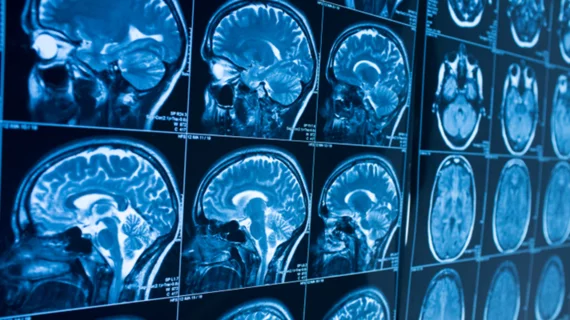Early onset dementia diagnoses surge 200%, with imaging playing a key part
Diagnoses of early onset dementia before the age of 65 swelled by 200% between 2013 and 2017, according to a new report from the Blue Cross Blue Shield Association. And while there is currently no definitive test to pinpoint the disease, 86% of those included in the analysis received brain imaging in the year prior to receiving this clinical verdict, the insurer revealed Thursday.
This trend was reported among commercially insured Americans between the ages of 30 to 64, with an average age at diagnosis of 49. The numbers are even more alarming when drilling down to younger patient populations—including a 373% increase in diagnoses among beneficiaries ages 30-44, and a 311% increase among 45- to 54-year-olds.
“The increase in early onset dementia and Alzheimer’s diagnoses among a generation who typically wouldn’t expect to encounter these conditions for several decades is concerning, especially since there is no cure for Alzheimer’s disease,” Vincent Nelson, MD, vice president of medical affairs for BCBSA, said in a statement. “Further education and research is needed to learn more about early onset dementia and Alzheimer’s, how to treat these conditions and what can be done to better prevent diagnoses.”
In 2017 alone, the insurer discovered 131,000 early onset dementia cases—which is characterized by progressive brain deterioration, memory loss and an inability to independently care for oneself. And the trend was even more pronounced among women, who represented 58% of those diagnosed.
BCBSA identified these trends by analyzing diagnostic codes in its medical claims data from more than 48 million beneficiaries. It then extrapolated its own numbers across the entire commercially insured U.S. population of 126 million. The Alzheimer’s Association estimates that about 200,000 Americans are living with early dementia, which aligns with the insurer’s data, the report noted.
The findings add one more reason for radiology practices to sharpen their dementia caregiving skills when providing brain scans using CT, MRI and PET. Experts are already expecting the aging of the population to more than double the cases of Alzheimer’s disease by up to 13.8 million by 2050. In the meantime, radiologists must expand their knowledge and skills in this domain, Indiana University researchers wrote in the American Journal of Roentgenology last year.
“As leaders in their departments, radiologists have a responsibility to make sure that their colleagues possess a sound understanding of the epidemiology and common forms of dementia, the special challenges and opportunities dementias present in the care of patients and families, and the ways in which the patient experience in radiology can be made safer and more hospitable,” they asserted.

